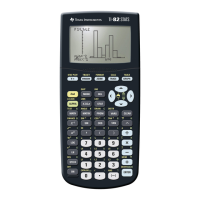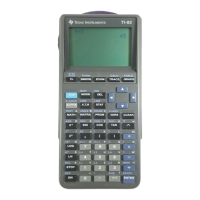Sequence Graphing 6–5
82EAB9~1.DOC TI-83 international English Bob Fedorisko Revised: 10/28/05 9:28 AM Printed: 10/28/05 9:28
M Page 5 of 16
To define or edit a sequence function, follow the steps in
Chapter 3 for defining a function. The independent variable in a
sequence is
n.
In Seq graphing mode, you can enter the sequence variable in
either of two ways.
• Press „.
• Press y [
CATALOG] [N].
You can enter the function name from the keyboard.
• To enter the function name
u, press y [u] (above ¬).
• To enter the function name
v, press y [v] (above −).
• To enter the function name
w, press y [w] (above ®).
Generally, sequences are either nonrecursive or recursive.
Sequences are evaluated only at consecutive integer values.
n is
always a series of consecutive integers, starting at zero or any
positive integer.
In a nonrecursive sequence, the
nth term is a function of the
independent variable
n. Each term is independent of all other
terms.
For example, in the nonrecursive sequence below, you can
calculate
u(5) directly, without first calculating u(1) or any
previous term.
The sequence equation above returns the sequence
2, 4, 6, 8, 10, . . . for n = 1, 2, 3, 4, 5, . . . .
Note: You may leave blank the initial value
u(nMin) when calculating
nonrecursive sequences.
Defining and
Editing a
Sequence
Function
Nonrecursive
Sequences

